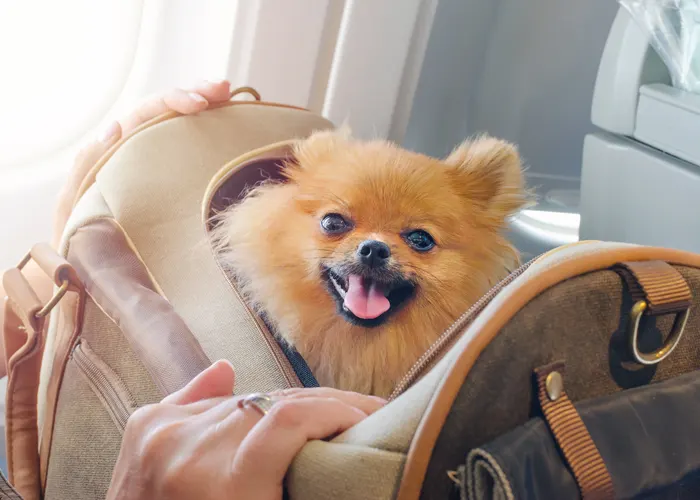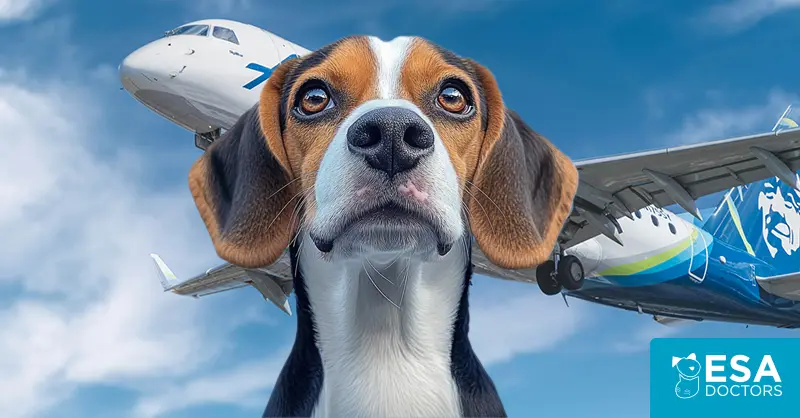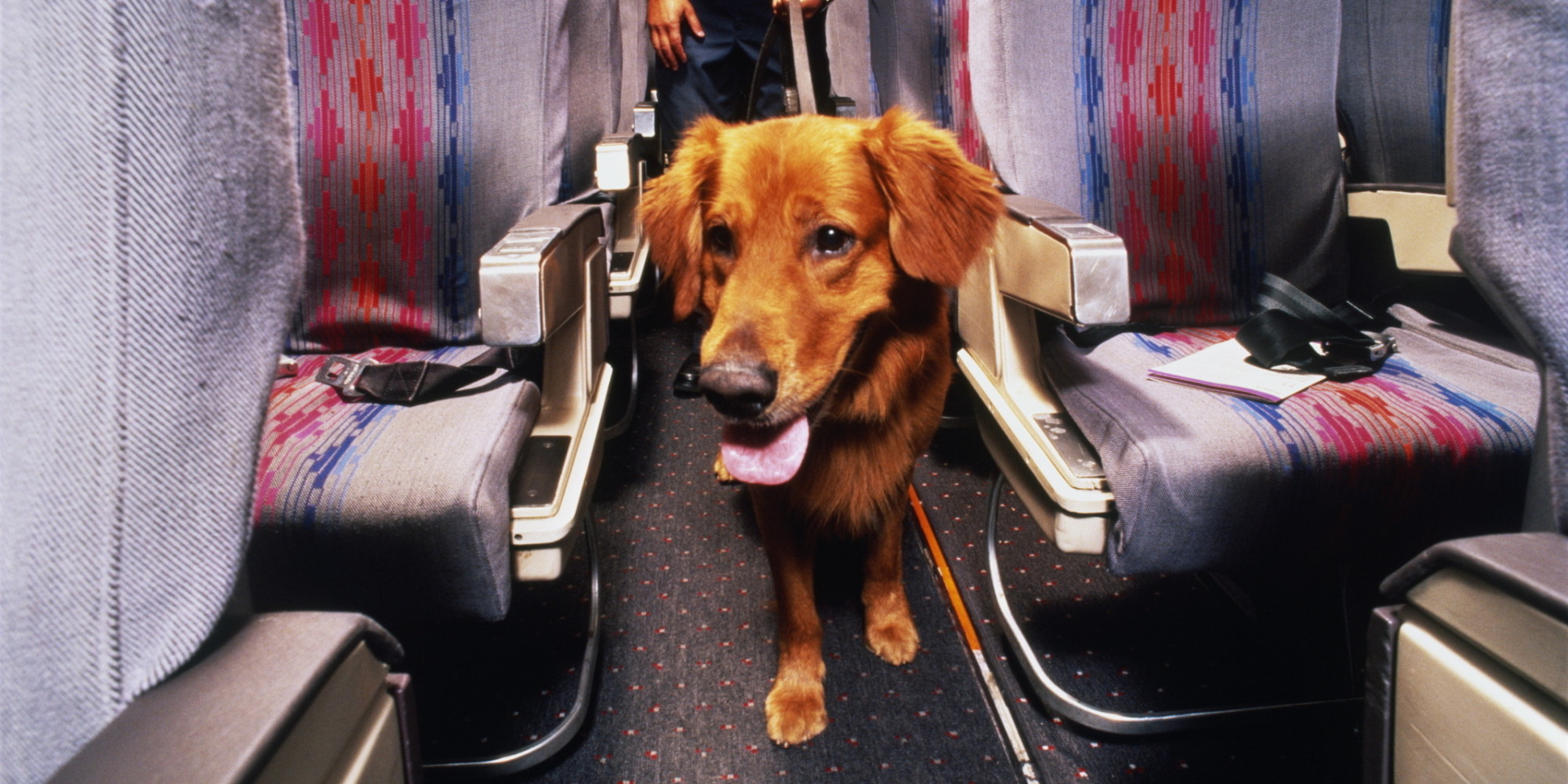This article was last updated on August 8, 2024.
You can bring your furry friend along for your trip on Alaska Airlines either in the cabin or in baggage if you follow the steps in this guide and submit the correct paperwork ahead of time. Two types of animals can fly with Alaska Airlines: small household pets like dogs, cats, and rabbits, and service dogs that assist people with physical and psychiatric disabilities. Unfortunately, there are no more U.S. airlines that allow emotional support animals on board.
In this guide, we’ll tell you everything you need to know about flying with your pet on Alaska Airlines, along with practical tips and advice from our pet travel experts, to ensure you and your beloved companion have a smooth journey. If you’re flying with a service dog, check out our guide on Alaska Airline’s service dog requirements.
Alaska Airlines Pet Policies
If you have a small dog, cat, rabbit, or household bird, you can bring your pet into the cabin on Alaska Airlines. You can also travel with ferrets, guinea pigs, hamsters, non-poisonous reptiles, pot-bellied pigs, and tropical fish, but only in baggage.
What to Do Before Your Flight
Before flying with your pet on Alaska Airlines, you’ll need to complete the following steps:
- First, book your flight with Alaska Airlines (through their website or another travel platform).
- Next, contact Alaska Airlines’ reservation department at this link or call them at 1-800-252-7522 to reserve space for your pet. Be sure to do this as soon as possible to ensure there’s space for your pet; a limited number of pets are allowed on each flight.
- If space is available, you will need to pay a $100 fee for pets brought into the cabin and $150 for pets traveling in baggage.
For travel in the cabin, dogs and cats must be at least eight weeks old, fully weaned, and accustomed to taking solid food without nursing for at least five days. The pet must also be accompanied by someone at least 18 years old.
Your pet will be allowed to travel with you if they can fit into the following carrier sizes:
| Pet Carrier Type | Pet Carrier Size |
|---|---|
| Hard-sided | 17″ x 11″ x 7.5″ |
| Soft-sided | 17″ x 11″ x 9.5″ |
The pet carrier will count towards your carry-on allotment, so keep that in mind when packing for your trip.
For travel in baggage, you will also need a health certificate from a veterinarian. The health certificate will confirm that your pet has been vaccinated. Keep a printed copy with you. The certificate should be dated within 10 days of your departure date, within 30 days of return travel on the same ticket, or within 10 days of travel if the return is on a separate ticket.
If you’re checking the carrier, they must weigh no more than 150 pounds combined. Dogs and cats must be at least 8 weeks old and weaned. Brachycephalic dogs and cats are not allowed to travel in the baggage compartment due to health risks. That includes the following breeds:
- Dogs: American Pit Bull, American Staffordshire Terrier, Boston Terrier, Boxer, Brussels Griffon, Mastiff (All Breeds), Bulldog, Bull Terrier, Chow Chow, Dutch Pug, English Bulldog, English Toy Spaniel, French Bulldog, Japanese Boxer, Japanese Pug, Japanese Spaniel, Pekingese, Pug, Shih Tzu, Staffordshire Bull Terrier
- Cats: Burmese, Exotic Shorthair, Himalayan, Persian
If you’re traveling to Hawaii or internationally, you must follow a different process for bringing your pet. You can find more about Alaska Airlines’ policies for Hawaii here and international travel here.
What to Do on Travel Day
Be sure to arrive early at the airport in case there are long lines to get through airport security with your dog. We recommend checking in at least 90 minutes before your departure time, and even earlier if you are flying during a busy travel day like Thanksgiving week.
If your pet is traveling in cargo, remember to bring a copy of your pet’s health certificate and include a water and food bowl in the carrier. Make sure your pet is comfortable inside their carrier, and the carrier is clean and free of leaks and structural damage. For all the details on Alaska Airlines’ requirements for pet carriers in cargo, check out this link.
Make sure your pet’s carrier has your name, address, and telephone number on it in case you get separated, or your carrier gets misrouted in baggage. If possible, your pet should have a tag with the same information (ideally, your pet should be microchipped).

What to Do During Your Flight
Once you’re on the flight, your pet must stay in the carrier the entire time. The carrier must also be stowed under your seat during taxi, takeoff, and landing.
When traveling with a pet in the cabin, you may not occupy an emergency exit row or bulkhead row. Your pet counts towards your carry-on allotment. You can bring a pet carrier and a personal item, or a pet carrier and a standard-size carry-on bag.
You can board with up to two pet carriers in the main cabin, but only if you purchase an adjacent seat. You’re also allowed to have two pets of the same species in one carrier as long as they fit comfortably.
Animals that cause a disturbance or have an odor can be removed from the plane, so make sure your pet is adapted for airports and planes, and be sure they’re bathed and well-groomed before the flight.
Need a PSD letter from a licensed therapist?
See if you have a qualifying disorder for a PSD by clicking below.






Leave a Comment